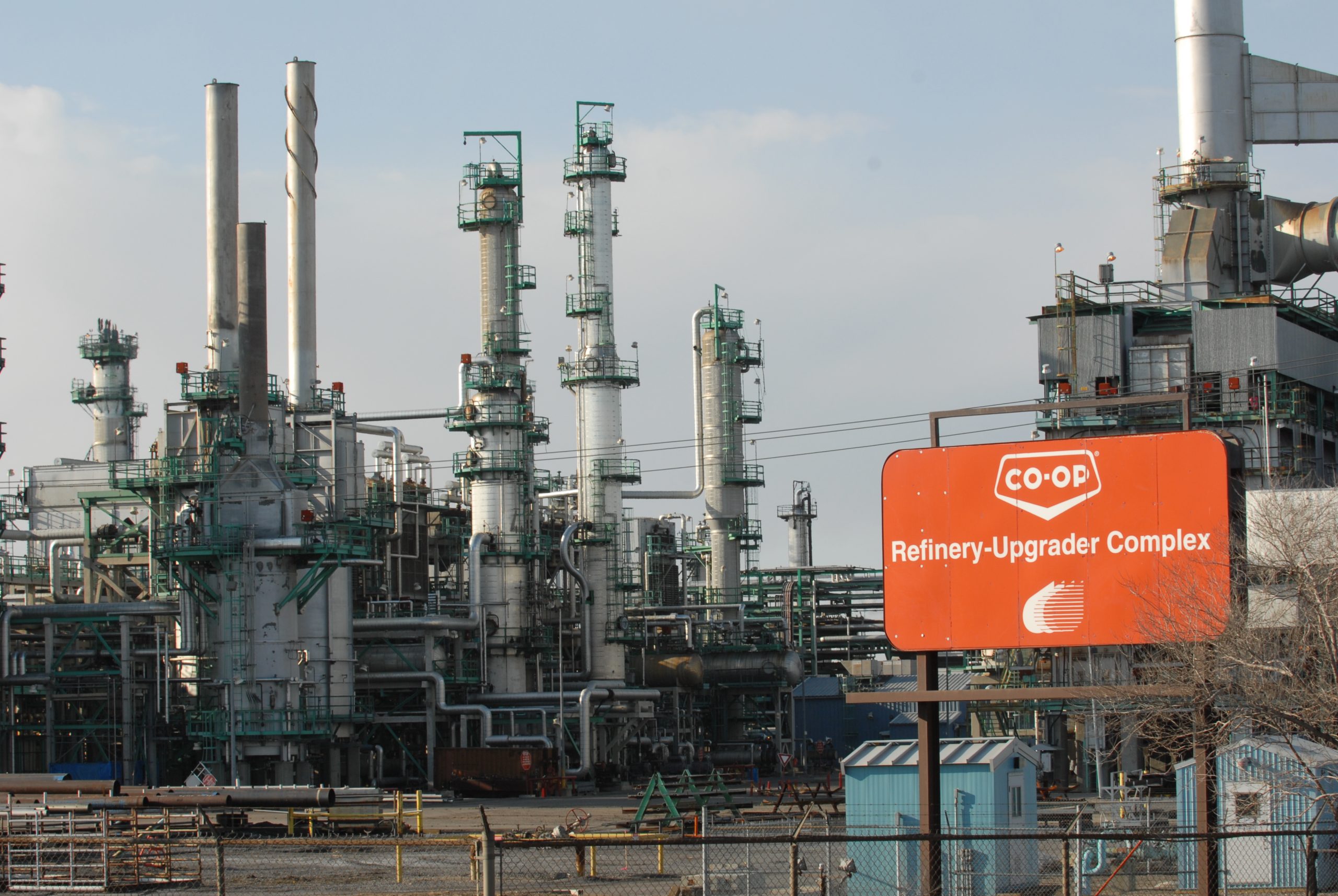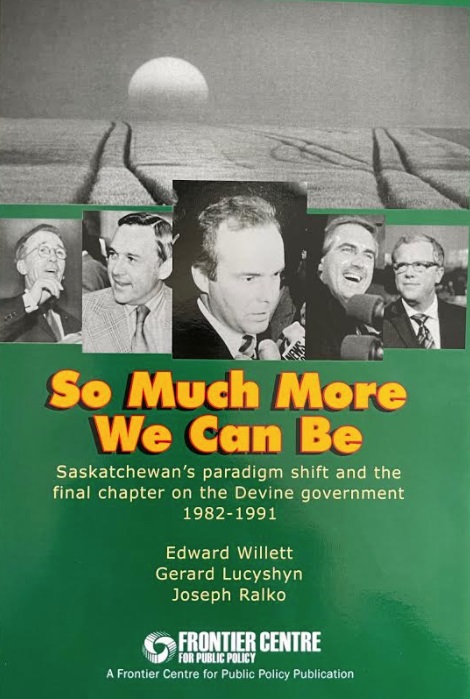
The Regina NewGrade Upgrader, now known as Section III of the Regina Refinery Complex, was contentious at first as low oil prices cratered its economics. But three decades later, it’s integral to the 130,000 barrel per day refinery. Photo by Brian Zinchuk
This is part 1 of a 6-part series examining the impact the construction of two heavy oil upgraders during Saskatchewan’s Grant Devine Government. The discussion hails from the recently published Frontier Centre book “So Much More We Can Be: Saskatchewan’s Paradigm Shift and the Final Chapter on the Devine Government 1982-1991” by Gerard Lucyshyn, Joe Ralko and Edward Willett. The book makes the case that despite very difficult economic times the Devine Government fundamentally transformed Saskatchewan’s economy into the diversified and prosperous place it is today. Published in 2021 it is now available here at Amazon.ca.
Part 1 of a 6-part series “So Much More We Can Be” – The Grant Devine-era Heavy Oil Upgraders and Their Lasting Impact.
If you had followed Saskatchewan politics in the 1990s, you would have thought the world was ending as a result of the Grant Devine Progressive Conservative government’s two signature megaprojects, the heavy oil upgraders in Lloydminster and Regina.
With oil price fluctuations dramatically hurting their economics, the Alberta government couldn’t abandon its investment in the Bi-Provincial Upgrader in Lloydminster fast enough, leaving Saskatchewan holding the bag and eventually selling it to Husky in 1998. Similarly, the NewGrade Upgrader in Regina was also wrought with financial and political peril.
These projects are featured in So Much More We Can Be: Saskatchewan’s Paradigm Shift and the Final Chapter on the Devine Government 1982-1991, by Edward Willett, Gerard Lucyshyn and Joseph Ralko. It was published this in 2021 by the Frontier Centre for Public Policy and just recently released on Amazon.ca at this link. The FCPP asked if I would write about the impact of these upgraders, and I heartily agreed.
You see, six years ago, I ran into Grant Devine at a birthday party in Estevan. I told him then that those two upgraders ended up being the foundation upon which a large portion of the Saskatchewan oilpatch was now based. I had spent much of the previous decade writing about it.
Touchy subject
In Regina, the politics around what was originally known as the NewGrade Upgrader were incredibly toxic. In 2010, while doing a story on the expansion of the Regina refinery, I found that the “upgrader” was not a popular topic. It was now considered an integral part of the refinery complex, and that was it. It’s now known as “Section III”
It turns out that FCL had finally bought out the Saskatchewan government’s ownership stake in 2007, so maybe feelings were still a little raw in 2010.
And yet now, over 15 years after the dust around these two megaprojects finally settled, and after 14 years of reporting on Saskatchewan’s oil and gas sector, I can say without a doubt that they were fundamental building blocks for our economy and provincial finances today.
Both of these projects have had a direct impact in my own personal life.
When my stepfather started dating my mom in 1987, he was one of the thousands of workers building the Regina project. A heavy equipment serviceman, he did oil changes on the giant cranes. The brand-new Ford F-150 he paid off while working on that project was the truck in which I learned to drive stick shift.
In 2002, I spent a year working in the Lloydminster area heavy oil industry.
When I was recruited to become editor of Pipeline News in 2008, I initially covered the Lloydminster region. There, I got a decent grounding in the heavy oil industry.
Heavy oil, if only we could develop it
Heavy oil has long been known to be present in Lloydminster area, with the first oil well drilled in 1938. It was also known that the vast, vast majority of Saskatchewan’s undeveloped oil was heavy oil. By 2016 it was determined that we had around 32 billion barrels of it – five times more than the Bakken in North Dakota, but we could only recover about two per cent of it.
Indeed a 1973 paper by C.E Jameson in the Journal of Canadian Petroleum Technology called it “the vast Lloydminster field,” but went on to say, “The oil and reservoir characteristics make production of the oil difficult, with oil recoveries by primary or waterflood means very low. The highly viscous oil, coupled with the fine-grained, unconsolidated sandstone reservoir, results in high rates of sand production with the oil.”
Up until around 1982, the technology didn’t exist to truly take advantage of it. Conventional pumpjacks, the nodding donkeys known throughout the world as the symbol of oil production, basically don’t work with heavy oil, at least when it hasn’t been heated. That’s because the insert rod pumps at the bottom of the well “sand off” if the sand content is more than half of one per cent. Well, the Lloydminster region heavy oil is basically oilsands, but at a much deeper depth than what you find around Fort McMurray. It’s essentially an extension of the same formation, and that sand is loosely consolidated. When you pump anything out of those wells, you’re going to get sand. A lot of sand. Some wells have “sand cuts” of up to 30 per cent.
It wasn’t until the development of the progressing cavity (PC) pump in the early 1980s that the Lloydminster region had the technology to produce that heavy oil, and do so in a big way. These pumps turn what looks like a bumpy chrome auger in a tube lined with elastomer – essentially a type of rubber. And they could handle sand cuts of 30 per cent or more. I spent 2002 operating an excavator in a sand retention pit, processing the sand that came out of some of these wells.
Instead of leaving the sand in the hole, the PC pump brought it to the surface. Doing so created channels underground known as wormholes, creating conduits for the heavy oil (and accompanying water) to flow to the well to be pumped out. This technology, known as CHOPS – cold heavy oil production with sand, absolutely revolutionized not only the region’s, but Saskatchewan’s oilpatch. Husky, by far the dominant oil producer in the region since the 1940s, became Saskatchewan’s largest oil producer for nearly all of the last 30 years. Over much of the last decade, just under one out of every two barrels produced in Saskatchewan was a heavy oil barrel, and one out of every four barrels came from Husky.
The problem with heavy oil is that it is so thick, it’s literally like molasses in January unless it is heated or diluted. Its viscosity means that it cannot be shipped via pipeline unless diluted with a much lighter hydrocarbon, known as condensate, acting as a diluent. That meant that in the CHOPS production zone around Lloydminster, most oil had to be shipped by truck. And you really couldn’t get it to market, unless you were turning it into asphalt. That was done at the Husky Asphalt refinery, where it was loaded onto truck and train as asphalt.
No, for heavy oil to be useful beyond asphalt, you had to process it, or upgrade it, to a thinner, lighter form of oil, known as synthetic crude, before you could further refine it into gasoline, diesel, or myriad other products.
And to do that, you need an upgrader. Or two.
Brian Zinchuk is editor and owner of PipelineOnline.ca and occasional contributor to the Frontier Centre for Public Policy. He can be reached at brian.zinchuk@pipelineonline.ca.




